Last updated on July 6th, 2021
Due to high demand, we turned this into a white paper!
Growing from a Bellevue, Washington garage–based online marketplace to a worldwide omnichannel eCommerce behemoth in about 25 years is no mean feat. But leave it to former Wall Street executive and “richest man in modern history” Jeff Bezos to make it happen.
In 2019, the omnichannel powerhouse was responsible for close to half of all eCommerce dollars in a high-spending U.S. market. What’s more, the company registered its most profitable quarter ever in the three months ended September 30, 2020, as North American revenues increased by 39% YOY amidst the pandemic-driven surge in online shopping. Meanwhile, quarterly net income reached a whopping $6.33 billion (an increase of 196.7% over Q3-2019).
A core group of Amazon shopping devotees contributes to this massive revenue haul—with an average of more than 200 million unique visitors to Amazon sites each month (for comparison, that’s near-equivalent to the population of Brazil, the fifth most populous country in the world).
But it’s the estimated 150 million+ Amazon Prime members around the world (up from 100 million in April 2018) who typically spend the most—
over $1,000 per year, according to recent stats. Said Bezos in his Q4-2019 earnings statement, “Prime memberships continue to get better for customers year over year. And customers are responding—more people joined Prime this quarter than ever before… We’ve made Prime delivery faster—the number of items delivered to U.S. customers with Prime’s one-day and same-day delivery more than quadrupled this quarter compared to last year.”
Even with the shift of their largest annual promotion, Prime Day, from July to October 2020, Amazon sales continue to grow, as do membership numbers; many say that’s in great part due to COVID-19 pandemic restrictions, combined with the perceived and real benefits of membership (including lower relative pricing, broader product assortment and delivery options, and availability of product reviews).
In today’s blog post,
we pull back the curtains on the sales juggernaut that is Amazon, to look specifically at the influence of Amazon Prime on sales in the Canadian marketplace.
With a 10,000-person Daily Panel reaching all age groups and regions across Canada—nearly half of whom are currently Amazon Prime program members—we’ve gathered key data points that you won’t find anywhere else on this key segment of omnichannel shoppers, including:
membership numbers and demographic characteristics
likelihood to join and/or renew
the value of different Amazon Prime services and benefits
how shopping behaviour is influenced by Prime membership—particularly spending and search habits around holiday shopping
and more.
Let’s dig into the data to learn more.
WHO ARE CANADA’S AMAZON PRIME MEMBERS?
As in the U.S., younger people are more likely than their elders to be Prime members. Specifically,
Canadian Millennials are 15% more likely to be Prime members than Baby Boomers, and are among the top 2 age groups who have been Prime members for 2–5 years (surpassed only by Gen Xers by 1%).
Putting this into context: As we learned in our COVID-19 report, “The Great Divide: One Country, Multiple Cohorts,” though Millennials and Gen Zers are nearly 2x more likely than Baby Boomers to make luxury purchases to keep their spirits up, they’re also far less prepared to support themselves should their regular incomes dry up. Thus, the fact that Millennials predominate among Canada’s Prime members makes sense, as younger, digital-native Canadians are more likely to search for online deals, and Prime membership comes with a host of budget-conscious perks, including “fast, free delivery on millions of items.” (Further incentive: student memberships are discounted by 50% and they also get a free 6-month trial.)
Interestingly, among those self-identified Prime members (n = 3,859), 11% use another person’s account to access member benefits, including a significant percentage of Millennials and a lesser but still significant degree of Gen Zers. This perhaps suggests that younger members are in fact benefitting from their parents’ accounts and/or shopping budgets.
WILL PRIME MEMBERSHIP CONTINUE TO CLIMB IN CANADA?
If you are not currently an Amazon Prime member, how likely are you to join in the next 6 months?
Signalling the continued growth of the program—among Amazon Prime non-members, 29% are “somewhat likely”/”very likely” to join in the next 6 months.
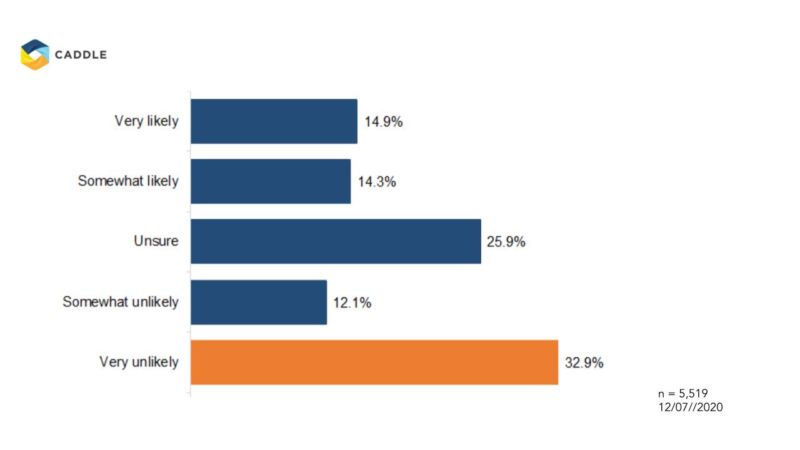
And once again, younger Canadians indicate higher receptiveness to joining the Prime program than older generations: Gen Zers over-index against the general population by about 10% (compare this to Canadian Baby Boomers, who under-index by about 10%).
WHAT FACTORS INFLUENCE PRIME MEMBERSHIP?
In a time of hoarding behaviour and product shortages, fulfillment issues and locked-down brick-and-mortar shopping opportunities due to the COVID scare, three interconnected factors seem to matter most to Prime members—pricing, convenience, and breadth of offering.
Factor #1: Pricing
Without a doubt,
price is one of if not the primary consideration when Canadians make purchases through Amazon, followed by product reviews (59%) and product descriptions (41%).
(Note: This is consistent with American consumers, 82% of whom list pricing as an important shopping consideration.)
What do you consider when purchasing a product on Amazon? (select all that apply)
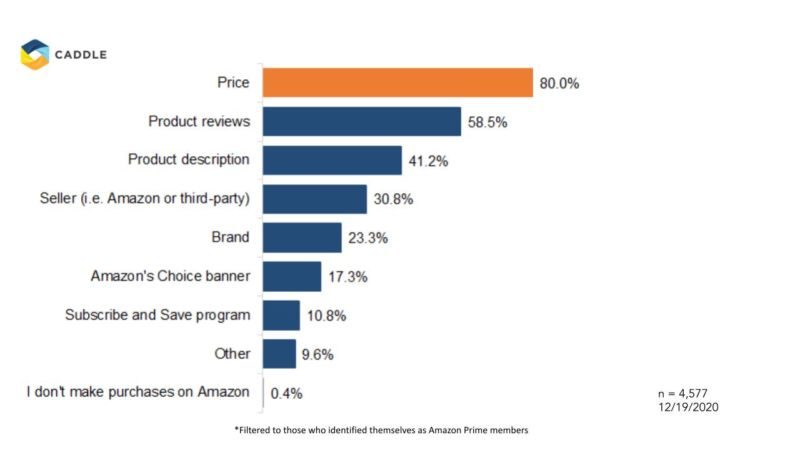
Interestingly in this case, Gen Xers and Baby Boomers slightly over-index on price as a consideration (at 82.5% and 81%, respectively), as do Maritimers (81–89%) with the exception of Prince Edward Islanders, British Columbians and Manitobans (81% each). Meanwhile, Millennials demonstrate marginally more interest in the “Subscribe and Save program” than the general population, as do Albertans, Ontarians, Prince Edward Islanders and Saskatchewanians (all at 12% each).
What factors do you consider when you shop on Amazon? (select all that apply)
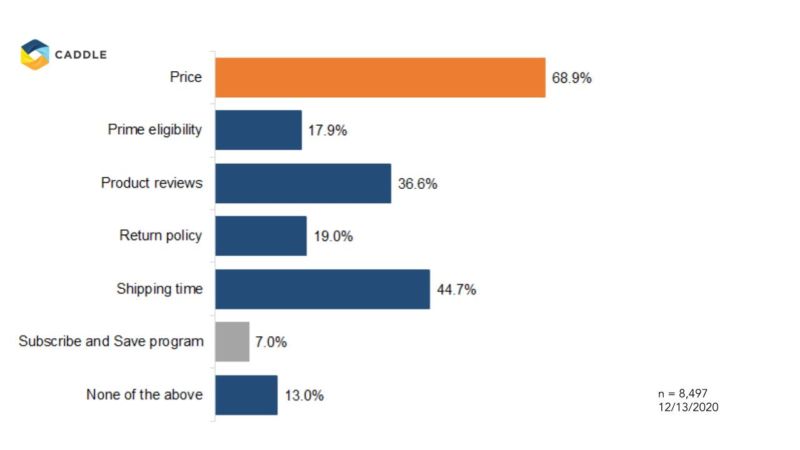
This is reinforced by other Daily Panel results, where more than two-thirds of consumers consider price when shopping on Amazon (n = 8,497) and nearly 40% are likely to visit Amazon to compare product prices before making a purchase (n = 7,493).
Factor #2: Convenience (including free delivery options)
Convenience is king for just over half of participating Prime members—especially when it relates to “free same-day delivery”—ranking above any other reasons to have an Amazon Prime membership.
What is the main reason you have an Amazon Prime membership?
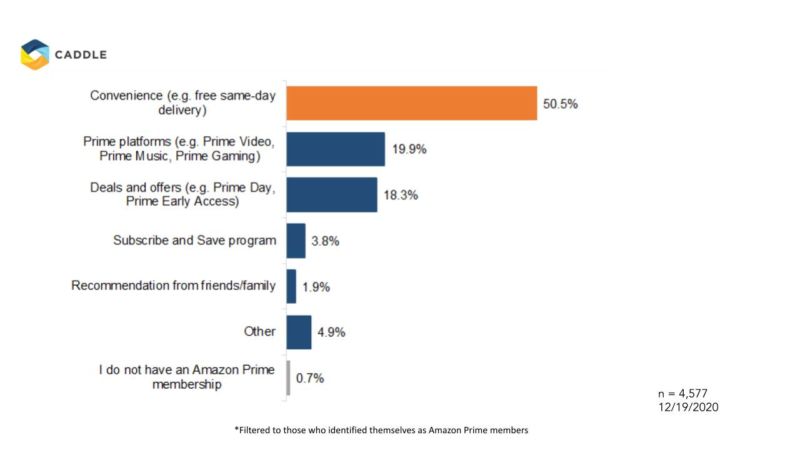
What Amazon Prime membership benefit(s) do you use? (select all that apply)
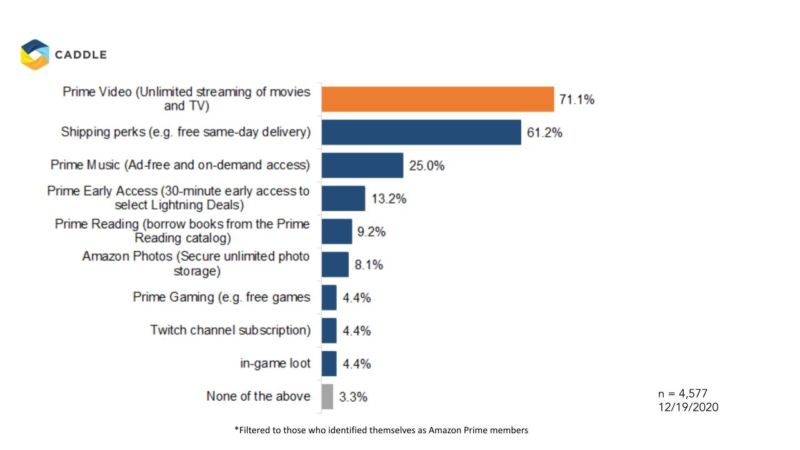
This is consistent with other Caddle findings: When asked of the member benefits they used, 61% of current Amazon Prime members ranked “shipping perk” at the top, second only to Prime Video by 10 points. And, in a Daily Panel survey from Dec. 13, 2020, nearly one in two consumers identified “shipping times” as a factor when shopping on Amazon. (We’re not surprised, mind you, as “flexible delivery options” is one of the features that Amazon hangs its hat on.)
Overall, younger Canadians lead the charge on convenience, with Millennials and Gen Zers making up the bulk of consumers who are interested in the variety of delivery options offered by the program.
With such consistent results on this measure, it’s feasible to consider that because digital-native consumers have access to so much information 24/7 via their smart devices, they’re looking for instant gratification (“I want what I want when I want it!”) and are thus less open to waiting for their purchases to arrive. In contrast, older generations—who we’ve learned are also less likely than younger demographics to make online purchases in general—have been conditioned to wait at least some of the time to receive their online shopping bounty.
Factor #3: Breadth of multi-channel platforms and features that no other retailer can match
While only about 20% of consumers identified Amazon’s various platforms as the main influencer in their current membership, almost three-quarters identified Prime Video as the top benefit of the program (Dec. 19, 2020; n = 4,577)—and other program features, including the Prime Music and Prime Reading, make up the remainder of the top 5.
This suggests that the omni-channel and omni-media nature of Amazon makes it an even more appealing and farther-reaching service than other retail-only platforms.
HOW HAVE THE PANDEMIC AND THE PRIME DAY DATE-SHIFT INFLUENCED SHOPPING BEHAVIOUR?
Has the pandemic prompted to you to become an Amazon Prime member?
About 20% of Canadian consumers were prompted to become Amazon Prime members due to the pandemic (and a further 30% were already Prime members before the pandemic hit).
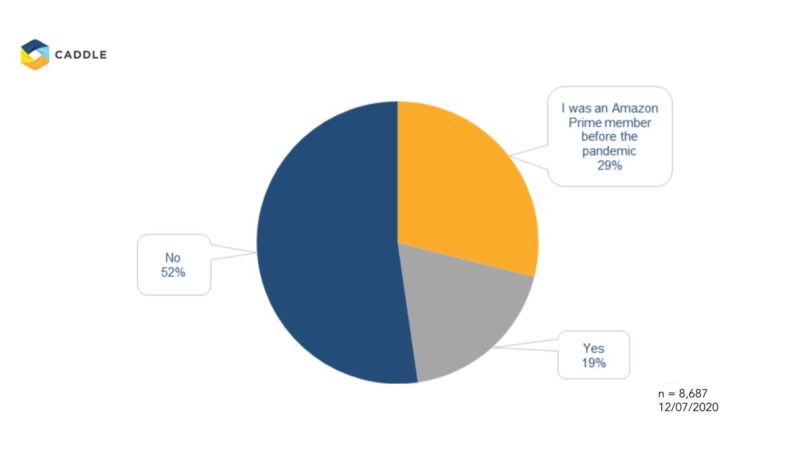
Gen Zers were 13% more likely than Baby Boomers and 10% more likely than Gen Xers to become Prime members due to the pandemic, and Prince Edward Islanders, Newfoundlanders and Labradorians and Quebeckers were all more likely than the general population to join the Prime program because of the pandemic.
At the same time,
the pandemic has affected both purchase size and frequency on the Amazon platform: More than a third of consumers have increased the amount they purchase in addition to their frequency of purchasing on Amazon since the pandemic started.
What impact, if any, has the pandemic had on your Amazon purchase size vs. frequency?
Purchase Size vs. Purchase Frequency
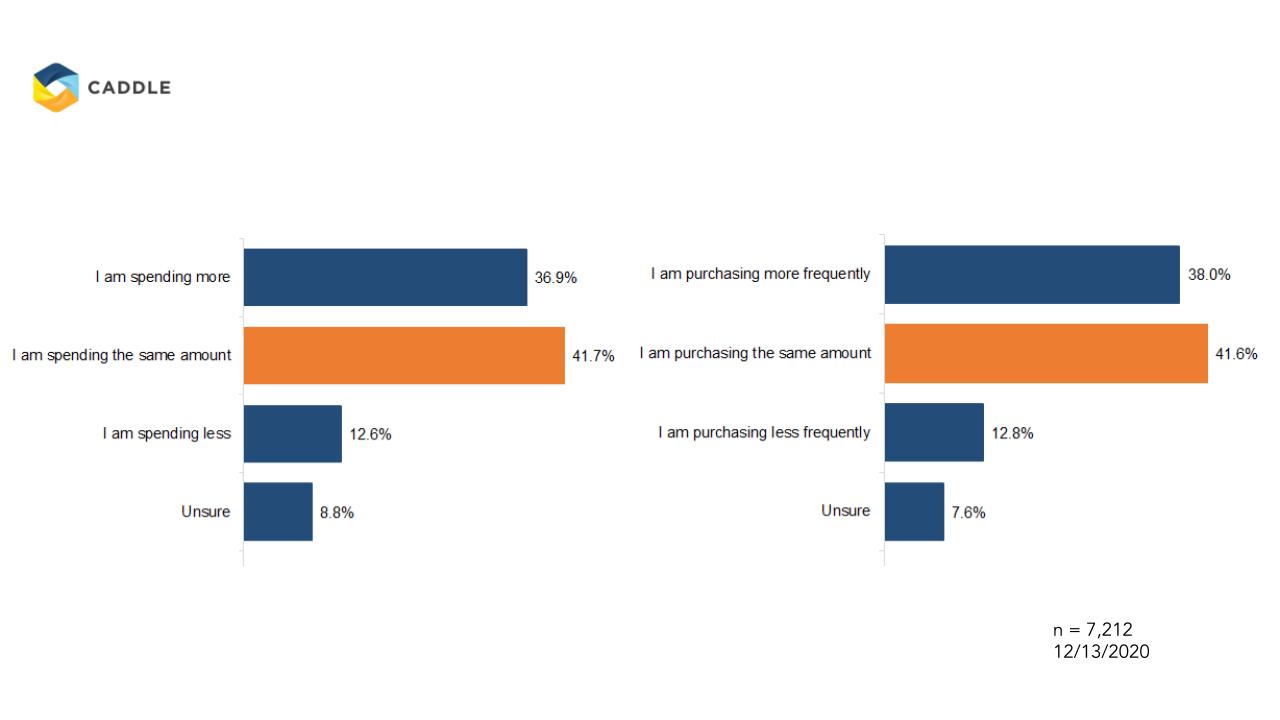
Meanwhile, the shift of Prime Day from July to October didn’t seem to have kept Canadian shoppers away from spending their hard-earned COVID cash: While 43% of the general population had planned to participate in Prime Day in 2020, 37% identified that they did in fact shop on the special sales date (Millennials made up the largest group of Prime Day shoppers, at 30%, followed by Gen Zers, at 27%). And nearly the same percentage of consumers indicated that they weren’t affected by the change in date.
Consumers who planned on participating vs.
consumers who actually participated in Amazon Prime Day this year:

How did the change in date of Amazon Prime Day this year affect your purchase behaviour in general?
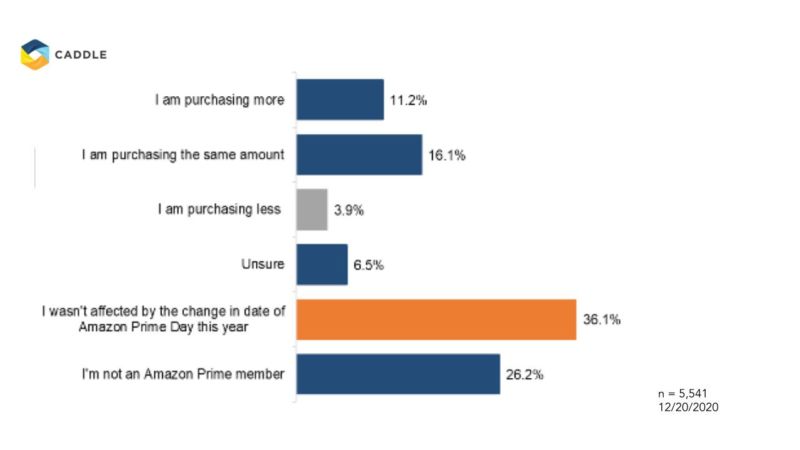
If you participated in Amazon Prime Day this year, what was the reason? (select all that apply)
Discretionary shopping was a clear driver for those people who took advantage of Prime Day deals—40% of consumers shopped for general holiday purchases, while another 38% shopped for early Black Friday deals.
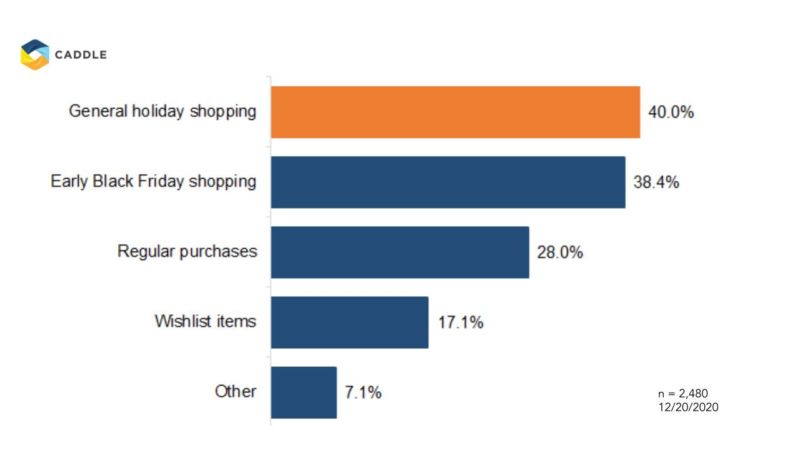
KEY TAKEAWAYS
No. 1 | CANADIANS STILL HAVE MONEY TO SPEND AND AMAZON PROVIDES PRACTICAL BENEFITS FOR PANDEMIC-RESTRICTED SHOPPERS.
Amazon is committed to providing a consistent omnichannel shopping experience—perhaps most importantly, offering consistent shopping times that they deliver upon, time and time again.
If retailers are going to take a bite out of Amazon’s growing domination of the Canadian marketplace, they’ll need to improve the consumer experience they deliver post-sale. With more proactive communications around order and shipping status, reduced shipping time and consistency on all purchases, and a more customer-friendly return process, Canadian retailers would succeed in winning back customers who want to support local over multinational, and might also amp up their reputation in the process.
No. 2 | AMAZON PRIME DAY TOOK CONSUMERS’ PURCHASING POWER THIS PAST HOLIDAY SEASON
Undeterred by a shift in date, a significant proportion of consumers waited until Q3 to make holiday purchases. (This is an interesting counterpoint to earlier Daily Panel findings, which indicated that about 30% planned to start their holiday shopping in November.)
With this, it seems that once again, the benefits of Amazon Prime membership trump most other considerations in consumers’ shopping journey.
To compete against the Amazon Prime behemoth for a decent share of consumers’ holiday spend, retailers in Canada are going to need to plan even further ahead than they already were, getting their unique assortment in line while at the same time, improving their online fulfillment product mix in all warehouses, in order to make shipping times consistent across all categories—thereby easing the friction that many consumers have with online shopping closer to home.
Does Amazon’s sales volumes have you hungry to learn more? Reach out to us for more details on the Amazon Prime program and the customers that make it so successful.
*Disclaimer: all data presented is owned by Caddle and has a Margin of Error of 1% or lower.
Get better business insights, faster, with Caddle.
Want more Caddle Insights? Sign up to our email list!

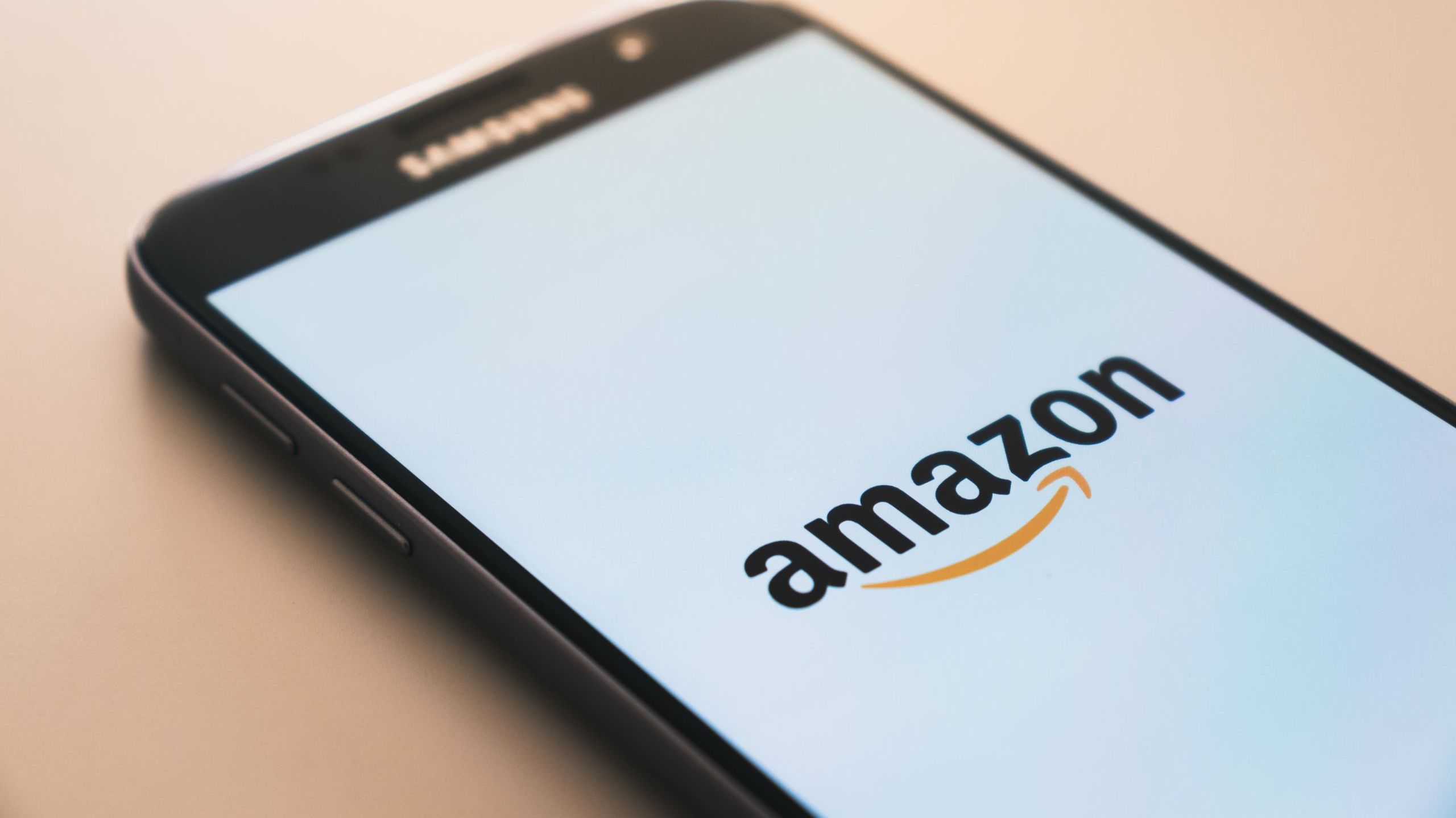

Leave A Comment